The life and times of Randy Rhoads
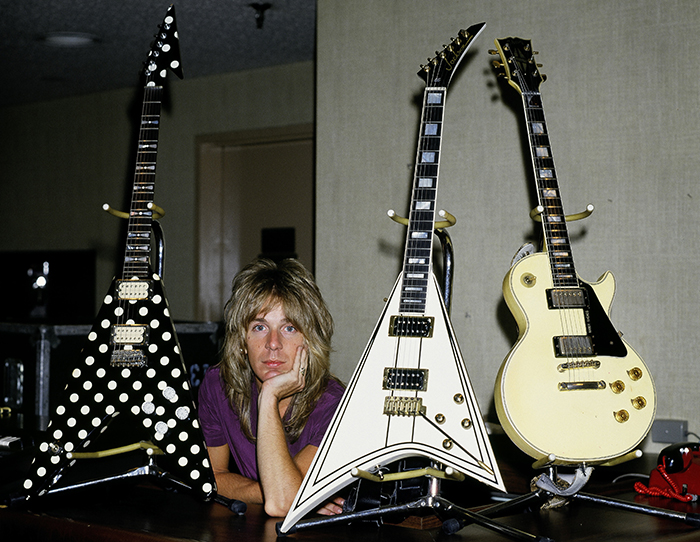
Thirty years have passed since the death of Randy Rhoads, and for some, the shock hasn’t completely subsided. That day in 1982 when Rhoads died in a plane crash that could have easily been avoided he took a little piece of heavy metal’s soul with him.
He was beloved for having played a major role in rescuing a self-destructive Ozzy Osbourne from himself and helping revive his stalled career. Other guitarists worshiped the searing fretwork he branded into the skin of such classic albums as Blizzard of Ozz and Diary of a Madman, and yet, Rhoads wasn’t satisfied as an artist. His voracious appetite for learning everything he could about the instrument he played – and classical music in particular – burned so intensely that he was willing to throw away his newfound fame and fortune, things he never really cared about to begin with, to seek pure knowledge in the world of academia.
Everybody figured he’d return from his studies one day and unveil his masterpiece, but Rhoads never got the chance. And that is a tragedy. Gone, but not forgotten, Rhoads’ memory has been kept alive by the fans and admirers who have never stopped celebrating his unique genius. Now comes an extravagant and comprehensive new biography, simply titled Randy Rhoads, (available at http://velocitybooks.org/shop/randy-rhoads/) that is sure to stoke the embers of their memories. Stuffing hundreds of rare, never-before-seen images from various stages in Randy’s life and incendiary career into more than 400 pages, Randy Rhoads – fashioned into a thick, colorfully rendered coffee table book – provides the definitive account of the guitarist’s all-too-brief time on this planet.
In painting their vibrant and illuminating portrait of Rhoads, writers Andrew Klein and Steven Rosen cast their nets wide, interviewing everybody from family members to childhood friend and assorted musical collaborators to compile a multi-faceted look at this legendary guitarist who was really a teacher at heart. Though it doesn’t make him out to be a saint, the exhaustively researched book – packed with details about the studio sessions that birthed his most famous works and engaging stories that reveal much about his character – is honest and sympathetic towards its subject. All of this makes for an engrossing tribute and essential reading.
Recently, Klein took time out to discuss the book with us.
What is it that makes Randy Rhoads such a compelling character, even all these years after his death?
Andrew Klein: Randy was very different than other legends who have left us too soon, such as Hendrix and Stevie Ray Vaughn. They were amazing guitar players. Randy was an exceptionally gifted musician as well. But the strong interest in Randy 30 years after his passing is attributed to several factors.
For starters, he left us just after he made it big. It was a time when we couldn’t wait to hear what would be coming next. Sadly, he passed away and left us hanging and wanting so much more. There is virtually no video of him. This adds to his mystique. We, as fans, want so much more than we were given – more music, more video, more photos. We want more of all things Randy! We just can’t let him go. He was so charismatic. We just can’t get enough of him.
All the information that has been released about Randy prior to our book was very on the surface. There hadn’t been anything released that explored and documented who he was. Our book is filled with stories as told by his closest friends who knew him best. They introduce us to the part of Randy that we’ve always wanted to know.
His dedication to learning his instrument, even at a young age, is remarkable. What struck you most about his musical education?
AK: Well, you nailed it. It was his dedication to learning and furthering himself that we find the most inspiring and remarkable. Even Ozzy was struck by this. When Randy informed Ozzy he was quitting the rock and roll lifestyle in favor of pursuing a master’s degree in classical music, Ozzy asked him to wait a little longer. Ozzy said, “One more year and you can buy your own university. You have to strike while you are hot.” Randy didn’t care about any of that. He made up his mind and nothing was going to persuade him otherwise.
There again, it’s that dedication to his beliefs that we find so inspiring. Furthering himself musically was at the top of his priority list. Anyone else would have relished in what he was experiencing. Selling out the world’s biggest arenas and stadiums got old for him rather quick. He got a taste of it and desperately wanted to move on to something else. That was Randy. He had a long list of things he wanted to accomplish.
Randy really did go his own way, dressing as he did in high school and even getting into trouble occasionally. What do you think it was that fueled his individualism?
AK: Randy was one in a billion. He didn’t try to be different. He was born different. I don’t think he dressed that way because his goal was to be different. He wore what he wanted to wear. He used to take his first girlfriend, Jan, with him when he shopped for shoes. He preferred the girl’s shoes, and he would have her try them on for him.
Clearly, he was embarrassed to buy them for himself, and he knew he would get grief for wearing them. It didn’t matter to him. He was very committed to doing what he wanted to do. Sometimes it did get him into a lot of trouble, especially at school. He constantly had jocks wanting to beat him up. They called him names. It didn’t affect him. Randy may have been frail, but he was emotionally strong. It took more than names to rattle him. He just laughed at them.
[pullquote_right]When Randy informed Ozzy he was quitting the rock and roll lifestyle … Ozzy asked him to wait a little longer. Ozzy said, “One more year and you can buy your own university. You have to strike while you are hot.”[/pullquote_right]
Do you think there was anything about his childhood that prepared him for life as a metal guitar idol?
AK: Both of his parents were accomplished musicians. Despite the fact there wasn’t a stereo in his house, he grew up in a house full of music. Had he never found an Army-Navy acoustic in his mother’s closet, an instrument would have eventually found its way into his hands. It was his destiny and beyond his control. Music ran through his blood. I’m not sure any of these elements prepared him to be a metal guitar idol. Even as a child, he was on a path toward become a virtuoso musician. Randy didn’t like heavy metal music. He didn’t listen to it and he didn’t own those kinds of records. Ozzy presented him with an opportunity to further himself. Randy obviously did a great job of maturing into that role. It was a ticket out of Hollywood and onto the world’s stage. That’s all it was for him. But when he got there, he didn’t want to be there. He thought he would make a record, tour, and then resume his life where he left off. He didn’t have future plans because there were so many opportunities being presented to him. He didn’t know what to do.
He had made up his mind to leave Ozzy’s band so that he could figure it out. Sadly, we’ll never know what he would have done. What we do know is that it would have been amazing. The Diary of a Madman album was recorded 15 months before he passed away. The subsequent year he spent touring, brought him a wealth of experience, and his playing improved immensely. The height of his abilities he had yet to reach are unimaginable.
One of the really interesting portions of the book deals with the rivalry between Randy and Eddie Van Halen, and the competitive nature of the L.A. music scene. It doesn’t seem like there was any real acrimony between the two and perhaps they didn’t really have much of a personal relationship at all. How much did they influence each other?
AK: It’s hard to say given that neither have ever spoken publicly about it. The very first time Randy saw Van Halen, he took his girlfriend Jan with him. Jan told us that Randy was “devastated” after the show. Here he was, the king of Burbank. Everyone was always telling him how great he was. Then he saw Eddie and it opened his eyes and he got a major reality check. It was healthy for him. He was inspired. He thought Eddie was great. He wanted to be great also. I know they met at least four times.
Quiet Riot and Van Halen played on the same bill at Glendale College in April 1977. Quiet Riot opened, Van Halen was the headliner. Randy once approached Eddie and asked him how he was able to keep his guitar in tune without a locking nut for his tremolo. Eddie refused to tell him and said it was his own secret. Randy couldn’t comprehend because he was a teacher at his core. He loved to help others and he was always willing to share anything he knew. He would teach anyone anything they wanted to learn. So, he was quite disappointed in Eddie’s treatment of him.
Randy and his good friend Lori Hollen were in the parking lot behind the Whisky loading his gear into this car. Eddie and Dave pulled up alongside of them in a white Mercedes diesel and began harassing him. Lori quickly put a stop to it and actually slapped Dave across his face. Quiet Riot’s drummer, Drew Forsyth, has said that the Eddie/Randy rivalry has been made up to be so much more than it was. He also said that Eddie used to come watch Randy play way more than Randy used to go see Eddie play. They were both great, and I’m sure there was an immense amount of mutual respect. Randy told journalist John Stix that he does a lot of Eddie’s licks live, and it kills him that he does that. But he added that it’s just flash, and that’s what the kids want to see. That’s what impresses them. He also said that it kills him because he believes in the importance of finding your own voice and style. He thought the worst thing a guitar player could do was copy someone else.
Finally, when Randy was home on break from the Ozzy tour, he decided to drive to his local music store to buy some classical albums. Randy said that when he walked into the record store, Eddie Van Halen was standing on line at the register purchasing the Diary of a Madman album. Imagine that scene. Can you imagine walking into a record store on any given day and seeing both Eddie and Randy in there at the same time?
Did Randy see Eddie as an equal? It does seem that even though Van Halen had a much larger profile nationally, music observers in L.A. didn’t see Randy as a lesser talent.
AK: There were some fans that were lucky enough to meet Randy that told him they thought he was just copying Eddie. It’s hard to say how that made Randy feel. I’m sure he didn’t appreciate it. Our Senior Editor, Peter, took lessons from Randy. Peter wanted to learn all the Van Halen songs. Randy would go home and learn the songs in his free time, just so he could teach them to Peter. I’ve heard those lesson tapes. It’s really cool to listen to. Randy charged $8 for a lesson. His students really got way more than their money’s worth. Randy thought Eddie was great. He wasn’t shy about saying so, but he hated the comparison.
[pullquote_right]Randy said that when he walked into the record store, Eddie Van Halen was standing on line at the register purchasing the Diary of a Madman album. Imagine that scene.[/pullquote_right]
In Quiet Riot, according to the book, Randy was frustrated by Kevin DuBrow’s domineering personality, and yet, it was Kevin who pushed Randy to step out of the shadows and become a star. How would you characterize the relationship between them? Could either have become the star they were without each other?
AK: Well, you can argue that one didn’t need the other to become a star. They both became stars separately from each other. But the dream was they were going to do it together. Randy and Kevin were the best of friends. Very close. Like brothers. They remained good friends even while Randy was with Ozzy. Kevin attended all the local Ozzy concerts and was invite to after-parties at the Osbournes’ house.
Kevin was domineering and Randy hated that. Randy tolerated it because he knew that that component of Kevin’s personality was the reason why they were so successful, locally. Those who knew Randy said that if not for Kevin, no one outside of Randy’s garage would have ever heard him play. Kevin was the driving force. Randy was not a go-getter. He just wanted to play and leave the details to others. He was also non-confrontational, which is why he put up with Kevin. It was easier for Randy to say nothing than to argue. Toward the end of 1979, Randy saw the writing on the wall. Music was changing. Disco, Punk, and New Wave had taken over. Randy and Kevin never really saw eye to eye musically. When he finally got settled in with Ozzy, he was happier because he felt he had more musical freedom. Ozzy was constantly telling him to “go out there and be the best Randy Rhoads you can be.” Ozzy wanted Randy to be a guitar hero. He wanted that explosive playing all over his records. Kevin stifled Randy and preferred poppy, catchy songs because he thought that’s what would ultimately get them a record deal.
The Starwood really launched Quiet Riot, in the same way that the Whisky propelled Van Halen to fame and fortune. What was the Starwood like back then?
AK: The Starwood was the place to be. If you liked music or wanted to go see a live band, you would go to the Starwood. The Starwood was home for Quiet Riot. Their pictures covered the walls. When they walked through the door on off nights, they were treated like celebrities. The VIP section was sanctioned for them and they were given all the free drinks they could handle. You could go see bands play at the Starwood seven out of seven nights per week. They also had multiple rooms and stages. You could walk into one room and watch a rock band, or go into another room and see a disco band playing at the same time.
The Starwood closed in the early 1980s. Things weren’t the same anymore. Punk bands had taken over and things became violent. Neighbors were complaining. The final straw was when someone, I think a bouncer, was stabbed. That was the end of the club and the end of a very important era of music on the Hollywood scene.
[pullquote_left]Kevin [DuBrow] stifled Randy and preferred poppy, catchy songs because he thought that’s what would ultimately get them a record deal.[/pullquote_left]
There are many great photos in the book, from Randy’s childhood through his teenage years and then into his professional life. How were you able to compile such a vast assortment of images? Also, what is your favorite and why?
AK: The bulk of the images were donated by Randy’s closest friends. The balance of the images were licensed by the respective photographers. I contacted each one of them and told them I was compiling a book and that I’d like to license their images. As I spent time with each photographer, I was able to see not only all of their images of Randy Rhoads, but also, their images that relate to the story. For example, when I visited with Jeffery Mayer, I asked him if I could see his Leslie West and Alice Cooper photos, as I knew I would need those, too. Then there’s another guy such as Jack Lue who shot everyone. He had to utilize the assistance of a hand-truck to bring all of his photos for us to see. We were able to license additional photos from him of peripheral characters such as Nikki Sixx, George Lynch, and Chris Holmes, as well as all of his amazing images of Randy.
It’s very difficult for me to pinpoint my favorites. Randy Rhoads was incredibly charismatic. All of his photos are endearing. One thing about Randy, he always looks different. If you think about it, the majority of the photos of him were taken over a two- to three-year period. Yet, he has so many different looks. He had a very animated face with lots of different expressions, especially while he was onstage.
There’s one photo that is very sentimental to me. I mentioned this in the book, during my prologue. It is the one taken by John Stix right after he interviewed Randy. It was the first real good photo published of Randy. It was in a section called Music Gear in the back a Circus magazine. I stared at that photo for years! When I was given the opportunity to write this book that was the first photo I sought out. John was the first person I called. There was no way I could produce this book without that photo. I was very disappointed that it was printed backwards on the 1987 Tribute album cover. I never understood if it was printed backwards intentionally, or if there was no one paying attention to detail.
In addition to the Stix image, every photo John Livzey took is stunning. And, you have to add the famous Paul Natkin photo of Ozzy holding Randy up in the air. It is probably one of the most famous photos in all of music history. It’s so amazing to me that that moment was captured on video, considering that there is virtually no video of Randy. On the rare night that there happened to be a bootleg video shot, the most famous photo ever was taken. You can watch that moment on YouTube. It was in Chicago on the “Diary” tour, during “Mr. Crowley.” When I was with Paul, I was astonished that he didn’t know there was a video of that very show. He couldn’t believe it when I showed it to him. Interestingly, at that moment, you can see a flash go off in the crowd. However, it was not Paul’s camera. He told he didn’t use a flash. So, somewhere out there, some lucky fan has his own photo that was taken at almost the precise moment as Paul’s. I asked Paul why he snapped a photo at that moment. He then went on to talk about something called “That Decisive Moment.” This is all covered in Chapter 14 of the book. Paul explains why he took that photo at that moment. It’s really interesting stuff. I really like Paul a lot. He was super kind to me.
You go into great detail about Randy’s work on both Blizzard of Ozz and Diary of a Madman in the book and the making of both records in their entirety. Do you think that people truly understand not only how big a role Randy played in the creation of those records and how innovative he was, but also how much of a salvation Ozzy and Randy were to each other at this time?
AK: Yes, I do think Randy’s fans recognize the importance of his role, without a doubt. Those who were there made sure of it. Ozzy has been telling the world for 30 years all about what it was like to work with Randy. Ozzy has said numerous times that the guys in Sabbath had zero patience.
One of the things Ozzy loved about Randy was that he was a teacher at his core. He used to sit with Ozzy and help him. Randy would find the right key for songs so that Ozzy would feel more comfortable and within his singing range. They worked out melodies together. Ozzy would hum ideas to Randy, and he would, in turn, convert those melodies into songs. “Goodbye to Romance” was created this way. When Randy would noodle or test sounds, Ozzy would say, “What was that?” And Randy would say, “What?” Ozzy would say, “Play that again” – and sure enough, songs were born that way as well. “Suicide Solution” and “Diary of a Madman” were born that way.
[pullquote_right]He constantly had jocks wanting to beat him up. They called him names. It didn’t affect him. Randy may have been frail, but he was emotionally strong.[/pullquote_right]
I know Randy was a salvation for Ozzy. Ozzy was really down on his luck. He had just been thrown out of Sabbath. He was broke, constantly drunk, and basically living in squalor. Then, Randy Rhoads walked into his life. I am not so sure Ozzy was a salvation for Randy. I think Randy could take it or leave it. His arm had to be twisted to go to the audition, and when he was given the job, he didn’t want it. He didn’t want to hurt Quiet Riot and his friend Kevin DuBrow. Although they were frustrated and going nowhere, he was prepared to stick it out. He was not one to seek auditions, and I don’t think he would have quit had he never met Ozzy. So, I would have to conclude that Ozzy needed Randy way more than Randy needed Ozzy. This is evident at the end of Randy’s life. He informed the Osbournes he was quitting the band. Ozzy went crazy over this and begged Randy to stay. Randy had made up his mind and nothing was going to change it. Ozzy knew what he had. When they first got together in 1979, Ozzy would introduce Randy to people by saying, “This is Randy, my secret weapon.” When they met producer Max Norman for the first time, Ozzy said to him, “Keep everything Randy records – don’t erase anything!” Ozzy Osbourne is no dummy. He knew what he had.
The politics within the Ozzy Osbourne band and the relationship its members had with Ozzy and especially Sharon Arden really ripped things apart. How did they manage to hold it together long enough to make those two records?
AK: The band had a great relationship with Ozzy. From the beginning, they were managed by Sharon’s brother, David Arden. He managed the band well. He was very attentive to their needs. It was ultimately David’s decision to bring Randy to England. David tried to convince Ozzy to find a guitarist in London who was local in order to make things easier. Ozzy begged and pleaded and said Randy was the only one he wanted. David acquiesced and sent Randy a ticket. When the band began working, they were all very close. Ozzy used to say to them, “Here’s my hand, here’s my heart, this band will never part.” They recorded the Blizzard of Ozz album, and then they began a U.K. tour.
It was at this time that David had to resign because his daughter had been born prematurely and he was needed at home. This is when Sharon stepped in to replace him. She immediately got cozy with Ozzy and everything changed. When they revisited Ridge Farm to record the Diary of a Madman album, she became notorious for emptying everyone’s suitcases and throwing their personal belongings into the pond outside. Everyone who was there said the vibe changed when she arrived. Ozzy began divorce proceedings with his wife, Thelma, and succumbed to severe depression. He stopped attending writing and rehearsal sessions and drowned his sorrows in drugs and alcohol. The Diary album was nearly complete before the real problems began. It was during these recording sessions that the decision was made to fire Bob [Daisley] and Lee [Kerslake] in favor of younger, greener musicians who wouldn’t challenge authority. When Rudy [Sarzo] and Tommy [Aldridge] were brought in, the band was no longer called the “Blizzard of Ozz” – it had now become an Ozzy Osbourne solo project, which is not what Randy signed up for. Randy expressed his displeasure with anyone who was willing to listen. Randy was no longer happy as a sideman. Add to that, Sharon placed Randy in a very uncomfortable position between herself and Ozzy, which she chronicles in her own book. This was about all he could take. He really just wanted to leave the band and that situation and move on with his life.
Most affecting of all, of course, are the accounts of what people were feeling in the immediate aftermath of Randy’s death and those remembrances people have of that day Randy died. What specifically hit you the hardest while writing about Randy’s tragic end?
AK: It was a senseless death. Three people died that should still be here with us today. Andrew Aycock was not the monster he’s been made out to be. I interviewed his entire family and some of his friends. Yes, it was incredibly irresponsible flying at treetop level. But he certainly wasn’t trying to kill anyone. He had a family to live for, and he was planning on starting his own charter company. Rachel Youngblood had a huge family. They loved her very much, and she was every bit a part of the Arden family. Sharon had known Rachel all her life. She took care of the entire Arden family. She was like a second mom to Sharon. And then there’s Randy. How can we possibly quantify what we lost that day? Here was a kid barely into his 25th year of life with so much promise ahead of him – so much life to live and so much music to make. He wanted to marry Jodi [Raskin], buy a house, go back to school, make solo records, take lessons and teach. He was taken from us before he could even begin his life. I can’t think of anything more tragic than that.

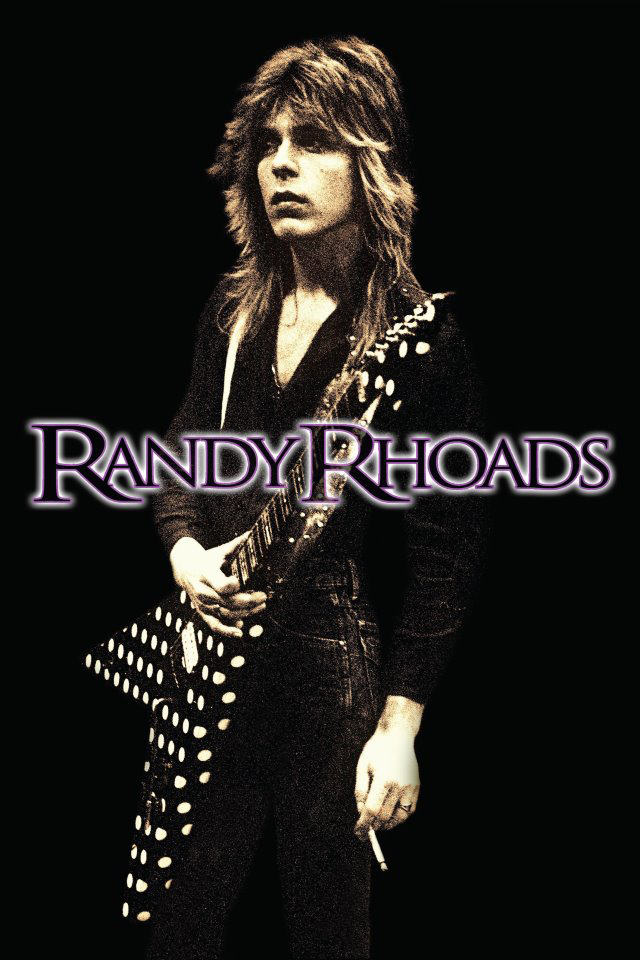
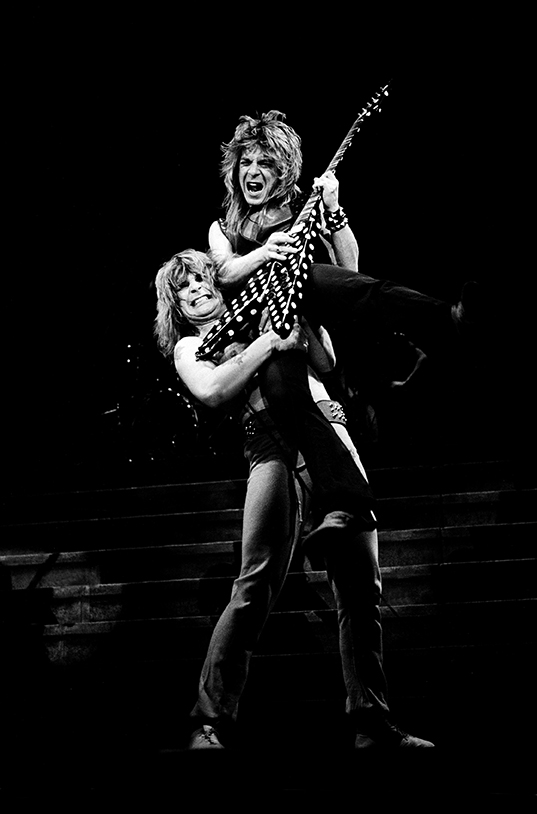
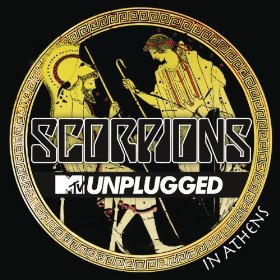
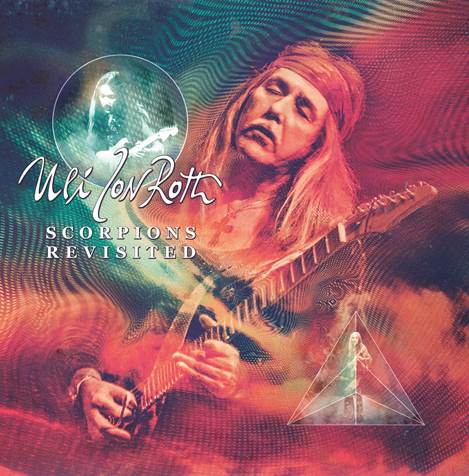
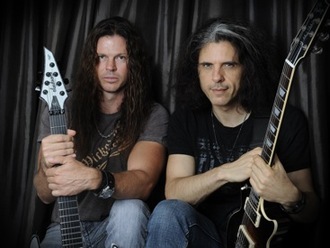
Randall William Rhoads in my opinion would have progressed to be one of the world’s greatest guitar players ever. Randy’s untimely death and what music he left us has placed him in a league all his own. Untouchable. The greatest gift he gave us was the concept to develop your own style and not to copy someone else’s playing. Hard work, dedication and the joyous love for the instrument comes through when you play.
Many guitar players are snobbery jerks and that is echoed in their music, which is why Randy’s genuine personality shines through his playing leaving all the other’s chivalry in the dust. His talent and playing is as fresh today as it was thirty years ago. Bless you fine soul, your inspiration grows more and more each day.